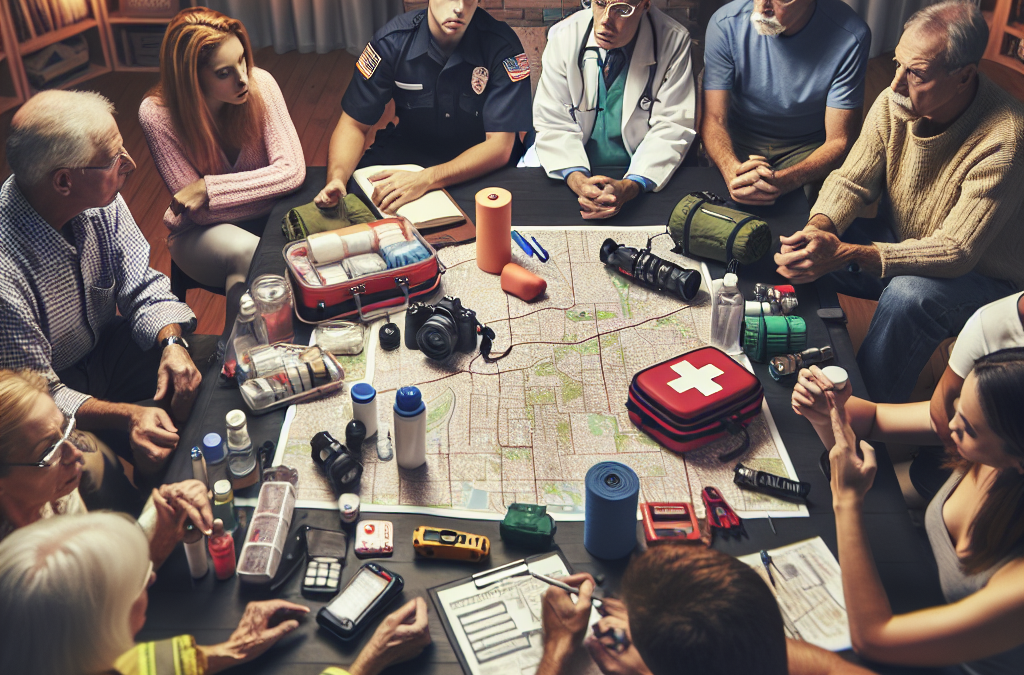Community Members
Understanding Local Risks
First off, it’s essential to have a grip on the risks that your community faces. Whether it’s flooding, earthquakes, or severe storms, each neighborhood has unique characteristics that influence the types of emergencies likely to occur. I’ve found that gathering community members together to share their experiences helps paint a clearer picture. You’d be surprised at how much knowledge you can gain just from a casual chat over coffee!
Think about reaching out through local networks or social media to engage your neighbors. You can host informal meetings or town halls. This way, everyone can contribute their insights, and a collective understanding of risks begins to form. Plus, it’s an excellent chance for everyone to get acquainted, fostering that sense of community we all cherish.
Once you’ve compiled these insights, it becomes easier to identify specific vulnerabilities within the community, which allows for targeted planning and resource allocation. Remember, when everyone is involved, responsibility for safety is shared, which strengthens our resilience.
Local Government Officials
Municipal Resources and Support
Local government officials play a pivotal role in any emergency planning process. They often have access to resources that individual community members might not be aware of. For instance, I’ve discovered that most municipalities have emergency management plans specifically tailored to their area’s risks. Engaging with these officials early on can provide you with insights into what tools and support are available.
Another key aspect is understanding what your local government prioritizes. This could include emergency shelters, communication systems, or public health initiatives. Building a relationship with these officials ensures that you can keep updated on any changes or enhancements in resources that could affect your emergency plan.
Plus, it’s also important to recognize that the government relies on community feedback! Sharing your perspective can help them fine-tune their approach and address any gaps you notice. It feels good to be part of that decision-making process and helps establish trust between residents and officials.
Thank you for reading this post, don't forget to subscribe NOW for FREE!
First Responders
The Role of Firefighters and EMTs
No emergency plan would be complete without the invaluable input of first responders—this group is literally on the front lines when disasters strike! In my experience, reaching out to local firefighters, police, and EMTs can deliver insights that are practical and grounded in real scenarios. Inviting them into planning sessions might seem intimidating, but they usually appreciate the effort.
Chat with them about their experiences during past incidents. I’ve learned so much about typical challenges they face during emergencies, and this helps the community understand how to assist them during a crisis. Who would’ve thought a simple conversation could foster a smoother coordination during real emergencies?
Furthermore, first responders can offer training sessions for the community. Whether it’s CPR training or how to respond in specific situations, their expertise is invaluable. I highly recommend forming partnerships with these folks to really beef up your preparedness.
Local Businesses
Embedding Resilience in Business Plans
Local businesses aren’t just economic players; they’re vital to community support during emergencies. I’ve come to appreciate the importance of including business owners in your emergency planning discussions. Often, these businesses have resources and trends that can aid in community recovery, especially in the aftermath of a disaster.
It’s also pretty smart to coordinate efforts. If disaster strikes, a local grocery store might help provide food resources while a hardware store could offer building supplies. By forming a network with local businesses, we can create a robust support system that enhances the overall response capability of the community.
And let’s not forget about communication! Having local businesses on board means they can help spread the word during emergencies. A simple post on social media or flyer in the shop can inform and rally community action when that’s most needed.
Non-Profit Organizations
Leveraging Community Engagement
Non-profit organizations often have unique insights into community needs and resources. Their experience working with at-risk populations makes them instrumental in an emergency planning process. I’ve found that these groups are experts at outreach; they know how to connect with individuals who may be overlooked in broader planning efforts.
Engaging these organizations can also provide added resources for recovery efforts post-disaster. Many non-profits specialize in services like mental health support or resource distribution, which can be critical in the aftermath of an emergency. Connecting with them early means you can coordinate better on the ground when things get tough.
Non-profits often have volunteers who can assist in planning or respond during emergencies. For instance, they can help with logistics or support communication efforts. This layer of volunteer involvement can significantly enrich your emergency response, making everyone feel like part of the collective mission.
FAQs
1. Why is it important to include community members in emergency planning?
Community members bring a wealth of experience and knowledge about local risks. Their input helps create a more comprehensive plan that reflects the community’s unique needs.
2. How can I engage local government officials in my planning process?
Start by reaching out through local meetings or official communication channels. Invite them to community discussions about emergency preparedness to build collaborative relationships.
3. What role do first responders play in emergency planning?
First responders provide essential insights from their experiences. They can also offer training and help guide community members on how to act in emergencies.
4. How can local businesses contribute to my emergency plan?
Local businesses can provide resources, spread information, and coordinate efforts for disaster recovery. Building partnerships ensures a community-wide response capability.
5. Why should I include non-profits in my emergency planning?
Non-profits have specialized knowledge of community needs, particularly for at-risk populations. Their resources and volunteer efforts can significantly enhance the community’s resilience during emergencies.






